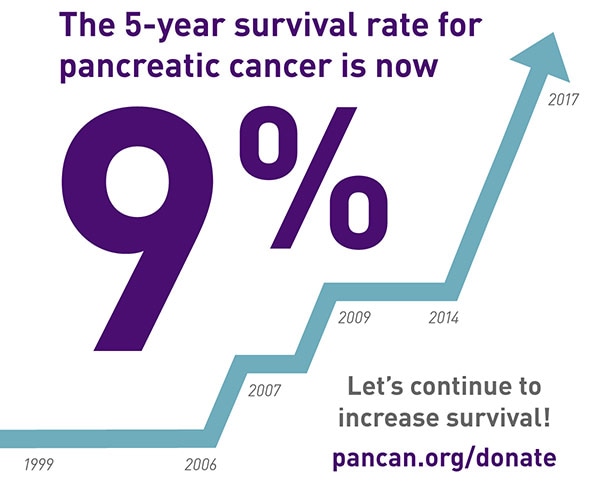In your first five years of living with cancer, numbers matter. Statistics inform your treatment, your doctor's recommendations, your prognosis, your mood on any given day, and your chances for the future. At the same time, statistics mean absolutely nothing because every individual cancer is independent and unique, and many people defy statistics. Also, if you have a particularly rare form of cancer (or a rare case of a relatively rare cancer, like I do), the shape and path of your cancer is likely not reflected at all in current research. Maybe your case will contribute to research, but that means that the numbers you’ll be able to find (or the numbers your doctor might, eventually, reluctantly reveal to you) really don’t apply to your case at all. You find yourself surrounded by numbers, some encouraging and some decidedly terrifying, but unable to reach out and hold onto to any of them, because there’s a very real chance that not a single one of them matters to your life. This has been my relationship to pancreatic cancer statistics over the last year. I have sought them out, because I’m a naturally curious person, and because I found early on that the more information I had about my new medical reality, the calmer and more confident I felt. I have used them to explain my situation to others, and I have used them to lobby Congress for pancreatic cancer research funding. It is certainly compelling to state dramatically that my cancer, stage IV pancreatic cancer, has a five-year survival rate of only 1%. However, I know that I cannot put any stock in these numbers. Both because they may not be accurate for my particular case, and because putting stock in these statistics is dangerous for my mental health. I can’t let myself think much at all about the possibility that I have only a 1% chance of living to see 2021. I can’t let myself imagine the chance that I might not live to age 35, or celebrate my 7th wedding anniversary, or attend any college reunions past my 10 year. I also can’t let myself worry that I might be in cancer treatment for the rest of my life, or that I’ll never get to have a child, or that I might never be able to get rid of my pancreas and thus slough off this burden that’s weighing me down from the inside. But of course, I do think about all these horrible possibilities. I think about them all the time. Recently, my therapist asked me for a clarifying example when I mentioned that I’ve become much more conscious of my own mortality since my last CT scan, in October, which revealed that my first chemo regimen had stopped working and all of my tumors were growing. I told her that whenever I enter recurring dates in my work calendar, such as my story time assignments on our rotating department schedule or my monthly committee meetings, I find myself casually thinking, oh, might not make it to that one, or I wonder if I’ll still be alive then. These aren’t always negative thoughts, in fact, they’re often neutral, nonchalant musings. It’s not so much that I’m upset by those low-single-digit percentages in all the statistics, but rather that they are the context for how I think about nearly every aspect of my life now. When I make plans for the future, or consider my priorities, or imagine how my life might change over the years, I am always conscious of that five-year frame around my future. In a sense, it has shrunk my perspective down to a smaller box, in which every small thing becomes larger by comparison, and the things that really matter glow so much brighter than they used to. Really, this smaller perspective on the entire span of my life makes it much easier to see quickly what truly matters to me. I don’t have to fumble anymore to figure out my priorities, and it’s easier for me to drop and walk away from the things that don’t make a difference to me in the long run. Because I may not have a long run. In some recent FMLA paperwork that my nurse practitioner filled out for my husband and me, she listed my prognosis as “guarded” and my typical recovery period as “lifelong.” Those two little words can definitely make you stop and clarify your priorities pretty quickly. As I head into what will surely be a telling CT scan on Wednesday (the first since starting my new chemo regimen), I too am guarded. But I’m also living mindfully, cherishing every little moment of my lifelong.
0 Comments
Leave a Reply. |
Authorchildren's librarian, Smithie, writer, reader, cook, gardener, cancer patient, medical oddity, PANCAN patient advocate, #chemosurvivor, #spoonie Categories
All
Archives
January 2017
|

 RSS Feed
RSS Feed